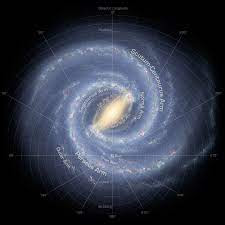Dark Matter: What is it?

This structure right above this paragraph is the Milky Way. Isn't it fascinating and so beautiful? Did you know that our solar system completes one orbit around the milky way in 230 million years? It travels at a speed of 200 kilometers per second. Isn't that ironical because our Earth also travels around the solar system and the solar system also revolves around the Milky Way. Have you ever asked yourself this question that what is this shining object at the center of the Milky Way? Turns out that this object is a black hole Sagittarius A. It is a supermassive black hole at the center of our galaxy like every other galaxy has one at its center. Now some of you smart fellows might have thought that the Sun revolves around this black hole like the Earth revolves around the Sun. You may have thought so because of the black hole's super powerful gravity. Well smart fellow your prediction is wrong. Sorry to break it to you but it is something else. What is this force that is c



